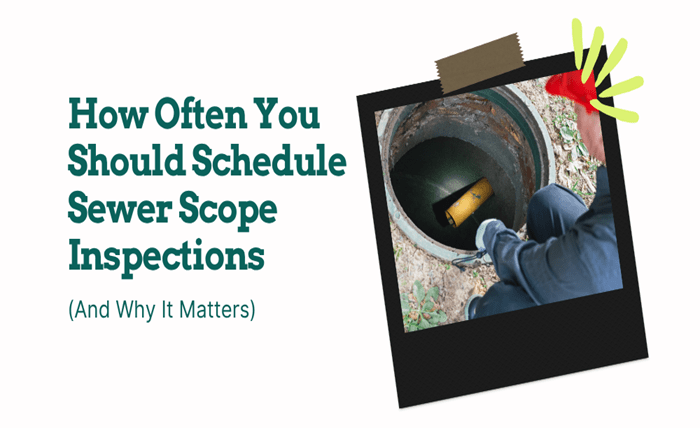Sewer line issues can be silent threats lurking under your yard. Many homeowners don’t notice them until a nasty backup or a significant landscaping repair is needed. By then, fixing the problem can mean serious costs and disruptions.
Fortunately, homeowners can spot issues early and affordably with sewer scope inspections before those issues spiral out of control. But how often should you get one done? The frequency of sewer scope inspection depends on your home’s age, plumbing layout, past problems, and even the trees in your yard. Keep reading to make smart decisions and avoid emergencies.
When Homeowners Should Schedule an Inspection
Certain home conditions make sewer line inspections more necessary than others. The following are the most essential times to arrange an inspection:
- Older homes (20-30 years old): Ideally inspected every 3–5 years to ensure safety and maintenance.
- If trees are close to the sewer line: Tree roots naturally seek out moisture and can grow into pipe joints.
- Before buying a new home: Don’t skip a sewer scope when purchasing property. Sellers might not even know they have a problem.
If the home has a history of plumbing issues, past backups, odd smells, or frequent drain problems, it can point to sewer trouble.
After Plumbing Problems or Renovations
When your plumbing system changes or acts up, it could affect the sewer line. Don’t ignore these red flags—they’re often precursors to bigger problems. The following situations call for prompt inspections:
- After backups or drain issues: If your sinks, tubs, or toilets have backed up, slowed down, or gurgled, get a sewer scope inspection.
- After renovation projects: Any remodels that increase water usage, like adding a bathroom or moving plumbing fixtures, should include a follow-up inspection.
- Foul odors indoors or outdoors: Persistent sewage smells may signal a hidden leak or a broken pipe beneath the surface.
Environmental and Exterior Warning Signs
Some of the clearest indicators of sewer line trouble aren’t inside—they’re in your yard. Attention to the landscape and outdoor symptoms can help you catch issues early. Watch for the following:
- Lush or soggy spots in the lawn: A section of unusually green grass, constant moisture, or even small sinkholes might point to a leaking or burst sewer pipe.
- Frequent clogs or bubbling toilets: If you’ve ruled out a local clog and the problem keeps returning, it may be deeper in the system.
- Rodent or insect activity: A damaged sewer line can attract pests.
Why Regular Inspections Are Worth It
It’s easy to overlook your sewer line because it’s out of sight. But that doesn’t make it low-risk. Routine sewer scope inspections can catch problems early and save money. The strongest reasons to stay proactive are the following:
- They catch small problems before they worsen: A sewer scope inspection can identify early-stage corrosion, cracks, or root intrusion.
- They help you avoid emergency costs: Sewer line failures often lead to some of the most expensive plumbing repairs.
- They provide peace of mind: Knowing your sewer line is clear and functional reduces stress, especially if your home has had issues.
How to Stay on Schedule
Most homeowners intend to stay on top of maintenance, but things slip through the cracks. Making sewer scope inspections a routine task can help you avoid preventable disasters. Some easy ways to stay consistent are the following:
- Add sewer inspections to your annual maintenance calendar: If you change HVAC filters or test smoke alarms, put sewer scope inspections on your list.
- Bundle it with other inspections: Pair sewer checks with annual plumbing or home inspections.
- Get a professional timeline from your plumber: Every home is different. Ask your plumber what they recommend for your area, home age, and yard conditions.
- Set digital reminders: Use calendar apps or home maintenance platforms to remind you when it’s time for your next check.
Don’t Let Sewer Problems Catch You Off Guard
Too many homeowners only learn about their sewer line when something goes wrong. But sewer scope inspections are easy to schedule, non-invasive, and often very affordable. They help avoid emergency repairs, keep your property intact, and prevent long-term plumbing issues.
The frequency of sewer scope inspection in Delaware County should be part of your home maintenance plan—one that gives you long-term savings and peace of mind. Don’t wait for problems to appear. Schedule your sewer scope inspection today and control your home’s plumbing health.

